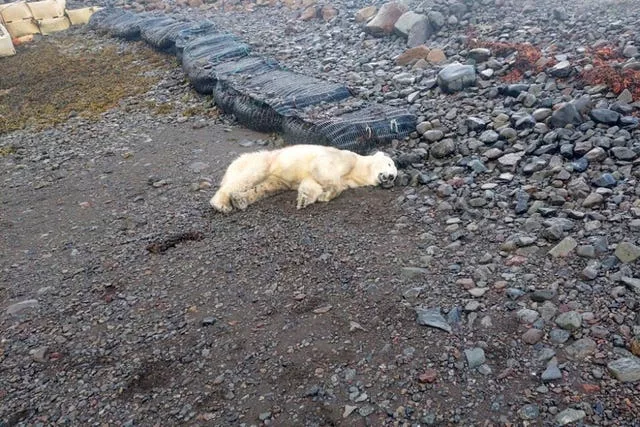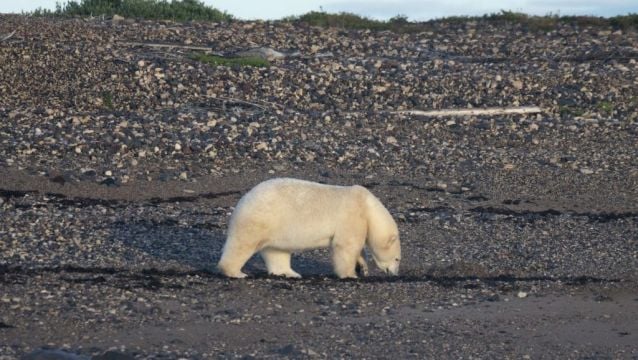A rare polar bear that was spotted outside a cottage in a remote village in Iceland was shot by police after being considered a threat, authorities said.
The bear was killed on Thursday afternoon in the north-west of Iceland after police consulted the Environment Agency, which declined to have the animal relocated, Westfjords Police Chief Helgi Jensson told The Associated Press.
“It’s not something we like to do,” Mr Jensson said. “In this case, as you can see in the picture, the bear was very close to a summer house. There was an old woman in there.”

The owner, who was alone, was frightened and locked herself upstairs as the bear rummaged through her bins, Mr Jensson said.
She contacted her daughter in Reykjavik, the nation’s capital, by satellite link, and called for help.
“She stayed there,” Mr Jensson said, adding that other summer residents in the area had gone home. “She knew the danger.”
Polar bears are not native to Iceland but occasionally come ashore after travelling on ice floes from Greenland, according to Anna Sveinsdottir, director of scientific collections at the Icelandic Institute of Natural History.
Many icebergs have been spotted off the north coast in the last few weeks.
Although attacks by polar bears on humans are extremely rare, a study in Wildlife Society Bulletin in 2017 said that the loss of sea ice from global warming has led more hungry bears to land, putting them in greater chance of conflicts with humans and leading to a greater risk to both.
Of 73 documented attacks by polar bears from 1870 to 2014 in Canada, Greenland, Norway, Russia, and the US — which killed 20 people and injured 63 — 15 occurred in the final five years of that period.
The bear shot on Thursday was the first one seen in the country since 2016.
Sightings are relatively rare with only 600 recorded in Iceland since the ninth century.
While the bears are a protected species in Iceland and it is forbidden to kill one at sea, they can be killed if they pose a threat to humans or livestock.
After two bears arrived in 2008, a debate over killing the threatened species led the environment minister to appoint a task force to study the issue, the institute said.
The task force concluded that killing vagrant bears was the most appropriate response.
The group said the non-native species posed a threat to people and animals, and the cost of returning them to Greenland, about 300 kilometres (180 miles) away, was exorbitant.
It also found there was a healthy bear population in east Greenland where any bear was likely to have come from.
The young bear, which weighed between 150 and 200 kgs, will be taken to the institute to study.
Scientists took samples from the bear on Friday.

They will be checking for parasites and infections and evaluating its physical condition, such as the health of its organs and percentage of body fat, Ms Sveinsdottir said.
The pelt and skull may be preserved for the institute’s collection.
A coast guard helicopter surveyed the area where the bear was found to look for others but did not find any, police said.







